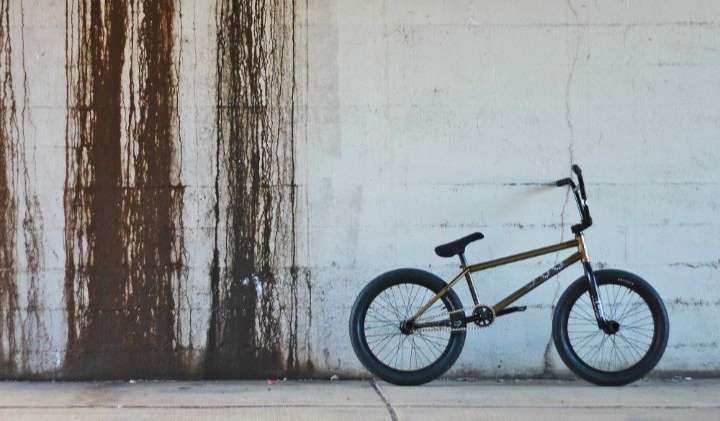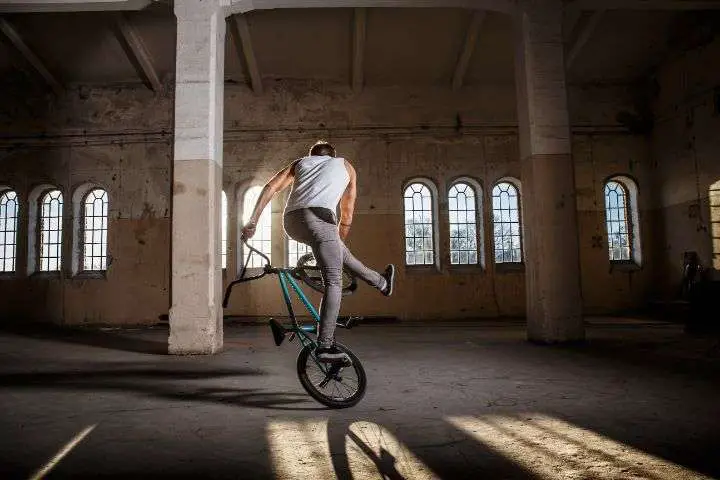BMX is a cycling sport that stands for Bicycle Motocross. The sport was created when young motorbike loving kids started using their bicycles on motocross tracks in southern California.
The bikes these kids were riding weren’t even close to the bikes we see BMX riders using today but the sport still had a phenomenal popularity increase in the early 70s. Riders started moving from motocross tracks to purpose-built BMX tracks for racing and tricks.
A motorcycle racing documentary created in 1972 is widely credited with pushing the sport into the mainstream. By the middle of the century, manufacturers had started to take notice and produce their bikes. These initial BMX bikes were created as a stepping stone to get more people into motocross. Motorbikes were expensive though many kids were interested in the sport it was hard to get their parents to make the large initial investment to get them into the sport.
BMX bikes were a clever way to get kids in the world of motocross. Once they were in it only increased the riders enjoyment of the sport, hopefully encouraging their parents to buy them a motorbike.
What is a BMX Bike?

I see BMX as the younger brother to most other bikes. They’re smaller and simpler while being strong, light and super manoeuvrable. Granted a lot of terrains aren’t very suitable for BMX riding but when it comes to dirt jump tracks, skateparks and street BMX bikes are finely tuned.
The simplicity of a BMX bike is its main distinguishing factor. The wheels never pass 20 inches in size; there are no gears; the bikes don’t use suspension and the frameset is a very generic shape.
20″ Wheels
20-inch wheels are a must for BMX bikes. Except for children’s bikes, which can be 16” or 18”, all BMX wheels are 20 inches in size. Just like mountain biking, there are various disciplines within BMX. Unlike the former, BMX bikes within all these disciplines use the same wheels. The used for each of these are pretty different but the wheels always remain the same.
Handlebars
No other riding discipline uses handlebars similar to those of a BMX. Due to low frames and seats needed to make a bike rigid and responsive BMX bikes need high rise bars.
These bars are produced as 2 or 4 pieces, both of which are suited to different types of riding. The overall shape of these two variants aren’t too dissimilar to one another other than a more squared-off design for 4 piece handlebars, which are commonly used on street and flatland bikes.
Control and rider position are very important in BMX. Riders are often in the air performing rotational tricks, which require a large amount of rear-end control. A low back end and high front end afford the rider that controls brilliantly.
Gearing
There’s no need for gears on a BMX bike, the riding position and style is too unsuited to extended riding. A lack of gears keeps the bike light and simple. The more simple the bike the less likely it is to unnaturally break and easier to maintain.
You aren’t limited to one gear forever. There are many different sprocket sizes that suit every type of rider and activity. Each sprocket combination will require a different strength to pedal. Smaller sprockets are easier to pedal, while larger ones make it harder.
Types of BMX Riding

Different forms of BMX riding have evolved ever since the inception of the sport, with various types of people taking the sport in vastly different directions. All of today’s riding styles evolved from BMX racing and freestyle.
BMX Racing
Coming from the world of motocross it’s unsurprising that riders went straight to the same styles they saw in the styles they originally saw. Racing tracks are usually made from compacted dirt and tarmac, with a series of large gap jumps, tabletops and berms to add difficulty to a race.
8 riders line up on a start ramp behind a gate, the gate drops and the riders compete to finish the course first. BMX racing is similar to motocross racing in many ways.
Race bikes are among the lightest bicycle motocross bikes you can buy. Many of which are made from carbon fibre and lightweight alloys. The name of the game is speed, acceleration and responsiveness. Many racing parts are far smaller than normal, most notably the seat and tires.
You will also notice quite a significant difference in frame style and sprocket to a freestyle bike. The frames are optimised for speed and weight reduction, resulting in a shallower, drawn-out bike. Race bikes aren’t ridden anywhere except the track so riders don’t have a problem with using some of the biggest sprockets possible. Bigger sprockets increase the top speed of a bike but reduce the acceleration. Riders use the steep start ramp and tremendous physique to get to top speed as fast as possible.
Park Riding
A lot of young riders start racing with their parents. As riders are young, they will see park and other freestyle riders and become enamoured with the carefree, expressive style of the discipline.
It’s very common to see the world’s top riders begin with racing. The large, tricky jumps require a high level of confidence early in the sport. This confidence coupled with the required skill set transfer very quickly over to park and street riding.
Park riding is very simply defined. It is the style of riding performed at a skatepark. There are many different types of ramps at a skatepark, everyone can find something they enjoy.
Street Riding
Kids can’t always access a BMX part or racing track. The inevitable next step was for riders to take to the streets. Instead of riding full speed at dirt jumps, riders started getting air from anything resembling a ramp or rail.
This form of riding makes use of urban and public spaces to perform tricks. Handrails, stairs, pavements make brilliant replacements for the skatepark. Street riders love to invent new lines from a previously blank canvas.
Styles between street riders vary tremendously as the terrain varies vastly between urban areas. Technical tricks have progressed to a high level, dividing the discipline from other freestyle disciplines.
BMX street bikes generally have steeper angles and shorter wheelbases. This makes them easier to manoeuvre but reduces performance at higher speeds, perfectly suited to street riding.
Flatland BMX
Almost a separate sport in itself, flatland riding is a very unique discipline. These riders are far fewer but usually solely committed to this discipline of riding.
There’s nothing quite like flatland riding in any other part of BMX. Riders use a flat surface to spin and balance and while contorting themselves and their bikes into complex positions. These bikes generally have an almost vertical head tube angle, 4 pegs, a high seat, specially designed pedals and bars. Many riders also use one or two brakes to help with tricks. The responsiveness of these bikes needs to be incredible, with manoeuvrability at utmost importance.
Pegs are very popular for flatland. Riders use them as extra foot placements to maintain a trick while the bike is in an unusual position. It’s quite mesmerising watching a flatland artist.


